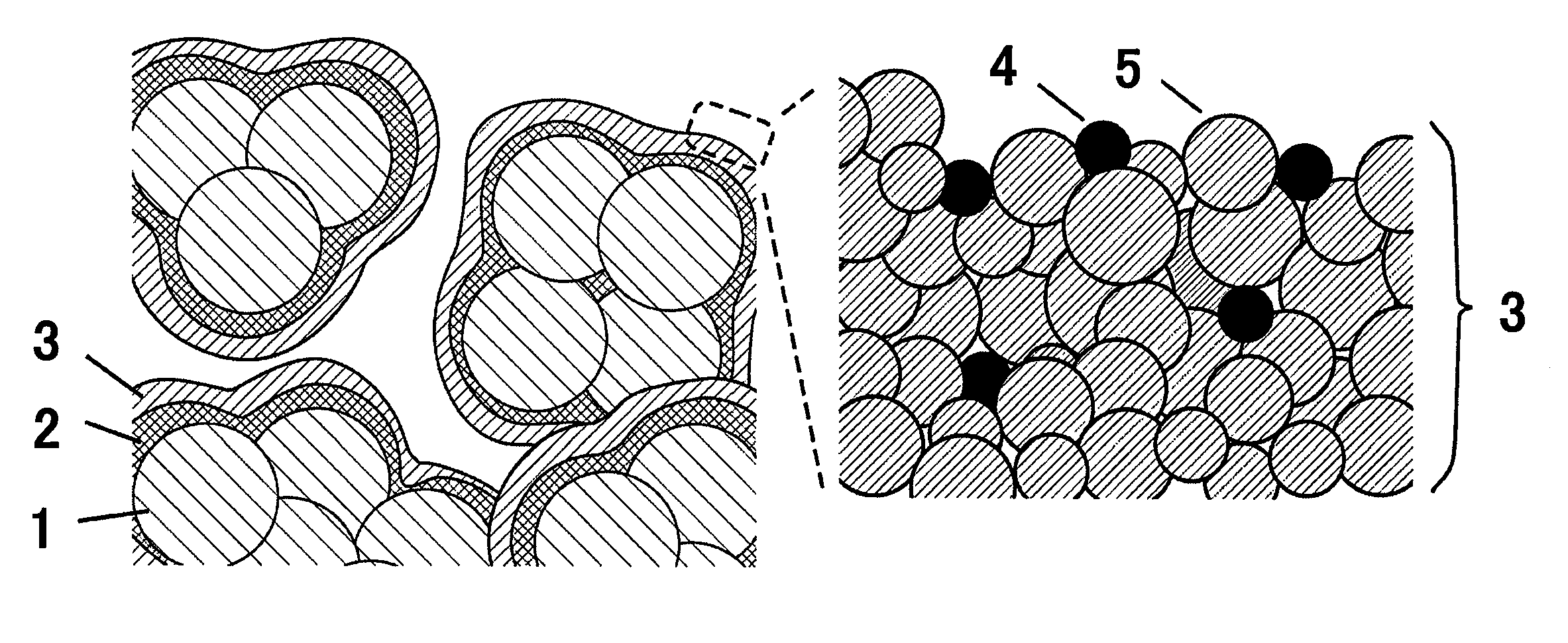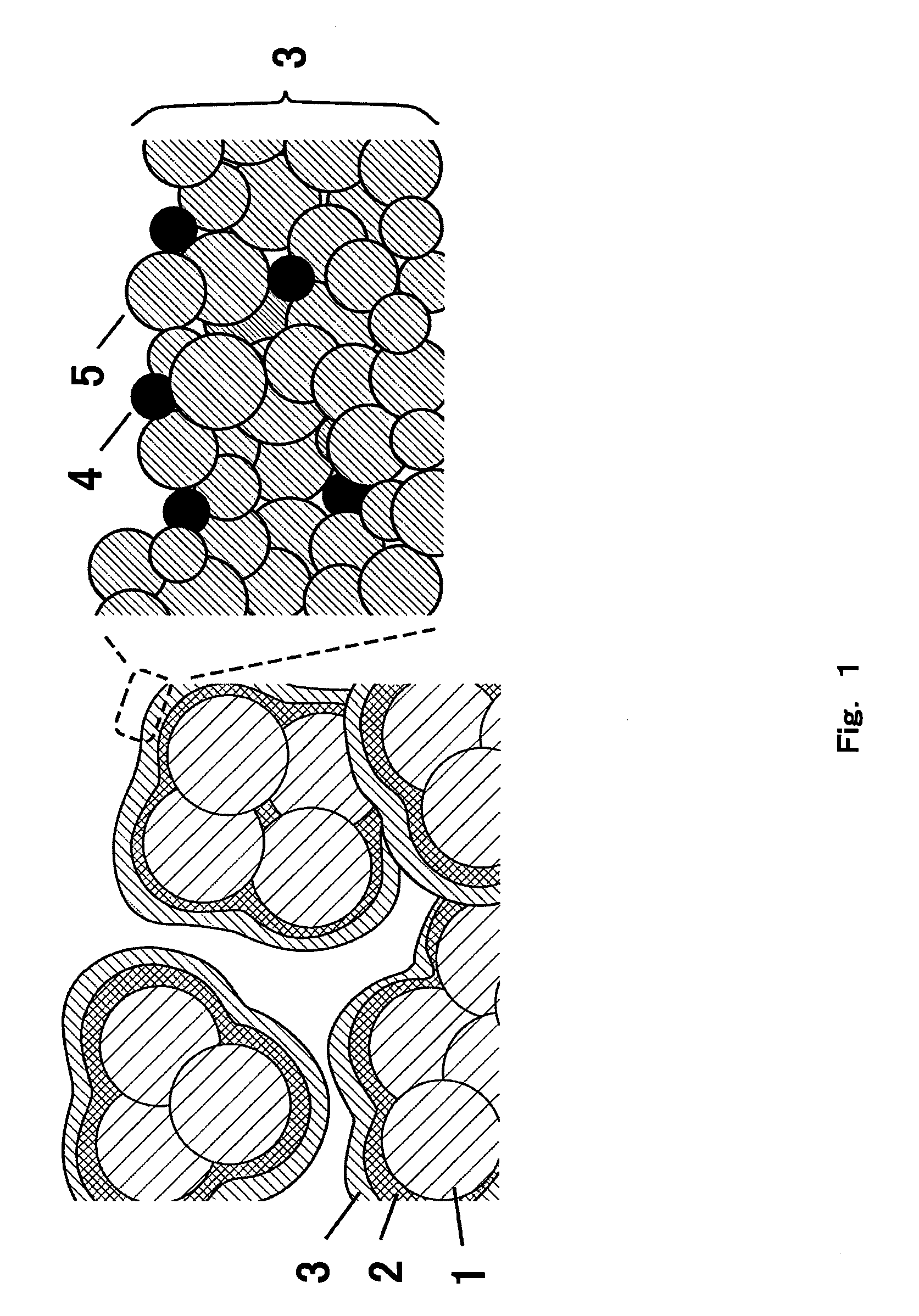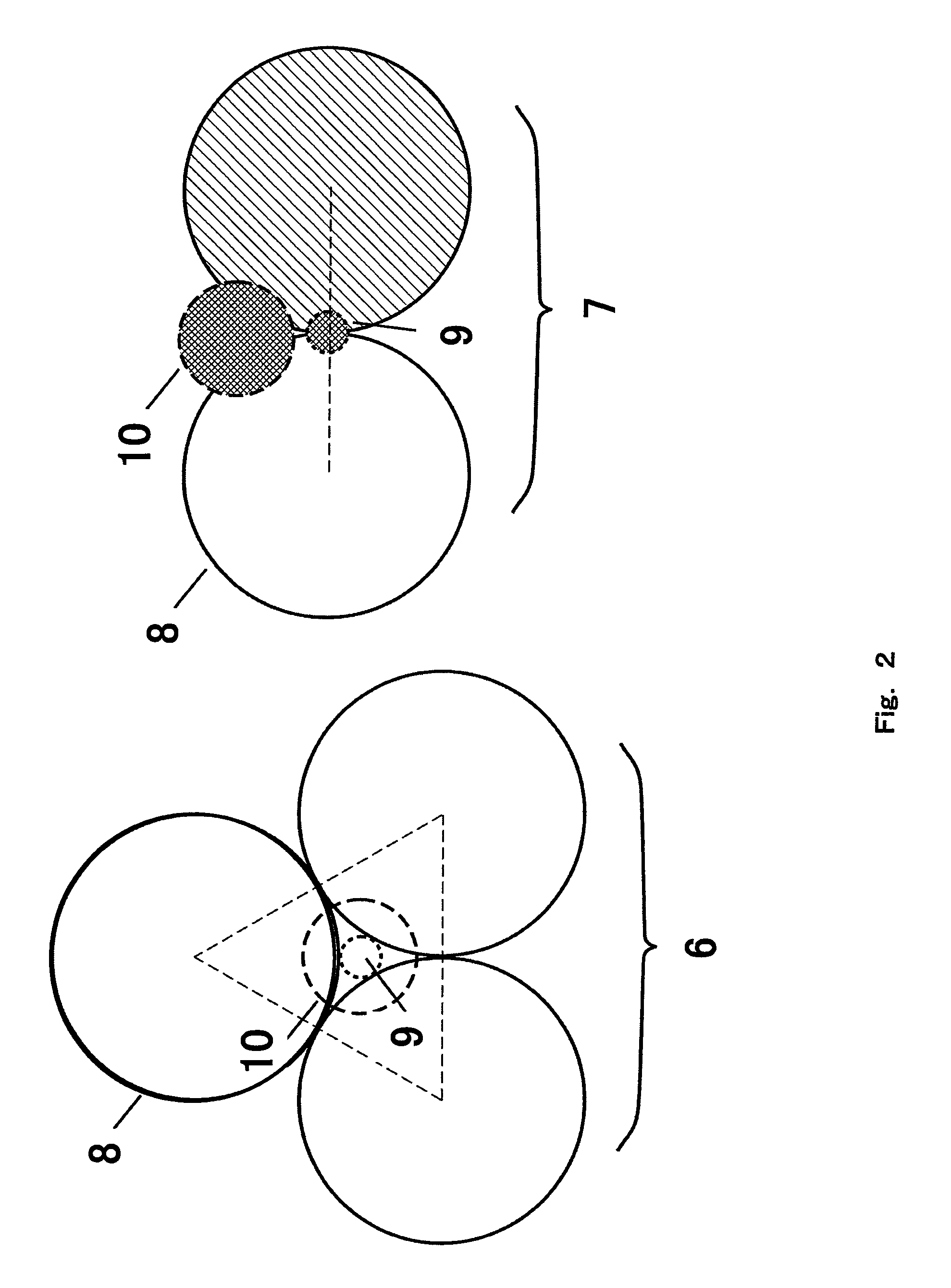Fuel cell comprising oxygen electrode with surface nanostructure
a fuel cell and surface nanostructure technology, applied in the field of fuel cells, can solve the problems of not being able to apply similar immobilizing treatment to the numerous platinum nanoparticles, and not being able to achieve the desired immobilizing effect, etc., to achieve uniform reaction rate and precise operation
- Summary
- Abstract
- Description
- Claims
- Application Information
AI Technical Summary
Benefits of technology
Problems solved by technology
Method used
Image
Examples
embodiments
[0042]FIG. 1 is a cross-sectional view of the oxygen electrode (a catalytic electrode) with surface nanostructure according to Embodiment 1. In FIG. 1, 1 indicates the carbon particles of conductive powder, 2 indicates the carbon thin-film of conductive thin-film, and 3 indicates the surface nanostructure. Carbon particles 1 are bonded to one another with the carbon thin-film 2, and the surface nanostructure 3 is formed on the surface of the carbon thin-film 2. Such constitutive elements increase the surface nanostructure 3 per unit volume of the oxygen electrode.
[0043]Surface nanostructure 3 formed on the carbon thin-film 2 further comprises the catalyst nanoparticles 4 and the carbon nanoparticles 5. Right column of FIG. 1 is the enlarged view of the outermost of the surface nanostructure 3. Quasi-spherical carbon nanoparticles 5 form three-dimensional structure where the catalyst nanoparticles 4 are confined at vacancies and recess. This surface structure has pathways to surface ...
example 1
Production of Oxygen Electrode
[0054]Oxygen electrode was produced by bonding acetylene black of the carbon particles 1 with the carbon thin-film produced by heat-treating macromolecule as the carbon thin-film 2 and forming on their surface the surface nanostructure 3 as shown in Reference Example.
[0055]Then, 4.0 g of acetylene black (DENKI KAGAKU KOGYO KABUSHIKI KAIHSA) with a diameter of about 50 nm, 2.0 g of polyacrylonitrile (Sigma-Aldrich Corporation) and 54.6 g of dimethylacetamide (Wako Pure Chemical Industries, Ltd.) were mixed and the mixture was agitated for 20 hours with a ball mill. 1.69 g of this mixture was dropped on 19.6 cm2 of carbon paper (Toray), and the solvent was evaporated in the low-vacuum chamber. Then the carbon paper was heated with the low-vacuum dryer. Temperature was elevated from the room temperature to 120° C. in 40 minutes and the elevated temperature was kept for 2 hours. Finally, this carbon paper was transferred to an infrared imaging furnace under...
PUM
| Property | Measurement | Unit |
|---|---|---|
| diameter | aaaaa | aaaaa |
| diameter | aaaaa | aaaaa |
| diameter | aaaaa | aaaaa |
Abstract
Description
Claims
Application Information
 Login to View More
Login to View More - R&D
- Intellectual Property
- Life Sciences
- Materials
- Tech Scout
- Unparalleled Data Quality
- Higher Quality Content
- 60% Fewer Hallucinations
Browse by: Latest US Patents, China's latest patents, Technical Efficacy Thesaurus, Application Domain, Technology Topic, Popular Technical Reports.
© 2025 PatSnap. All rights reserved.Legal|Privacy policy|Modern Slavery Act Transparency Statement|Sitemap|About US| Contact US: help@patsnap.com



